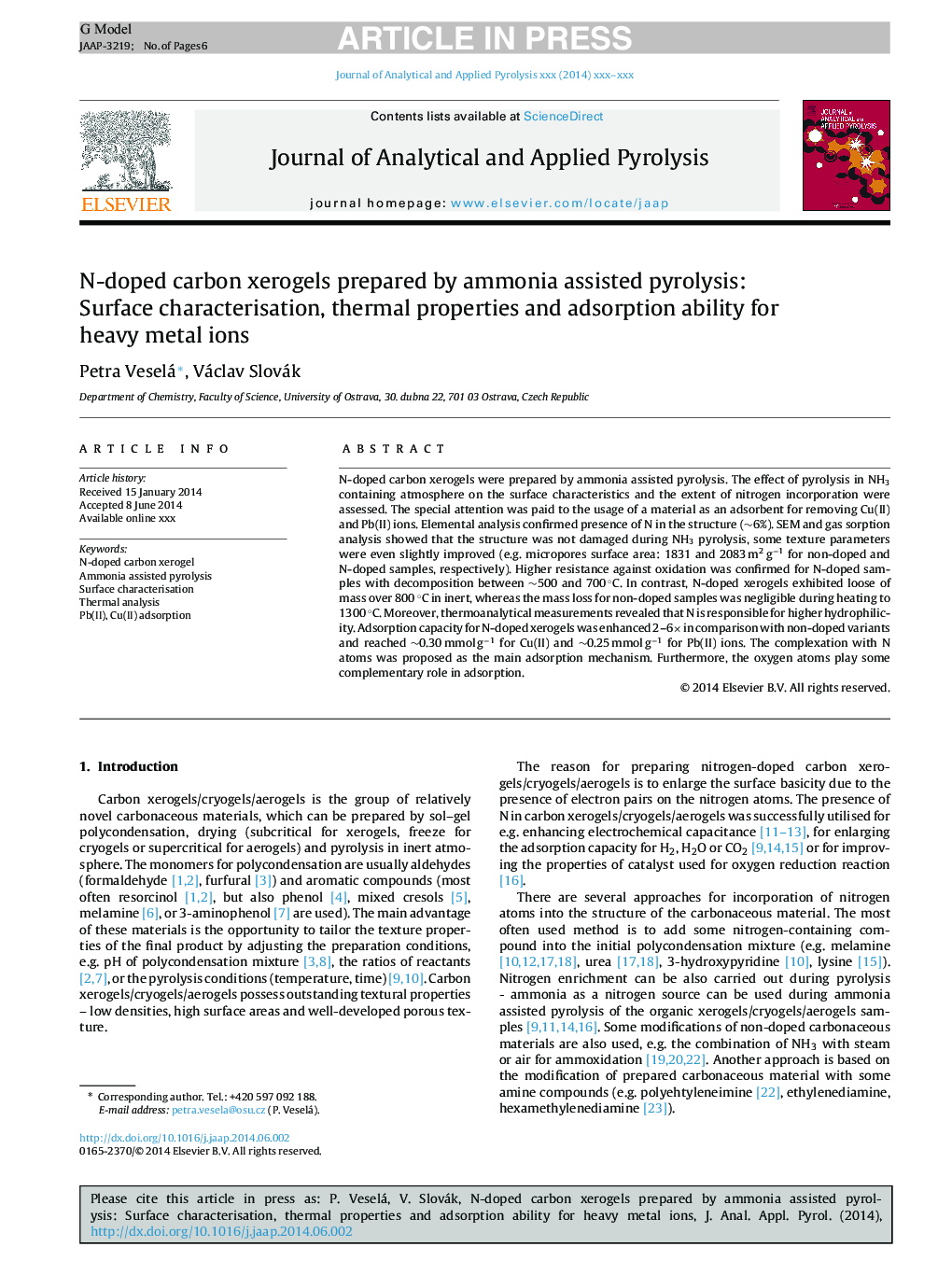| Article ID | Journal | Published Year | Pages | File Type |
|---|---|---|---|---|
| 7606919 | Journal of Analytical and Applied Pyrolysis | 2014 | 6 Pages |
Abstract
N-doped carbon xerogels were prepared by ammonia assisted pyrolysis. The effect of pyrolysis in NH3 containing atmosphere on the surface characteristics and the extent of nitrogen incorporation were assessed. The special attention was paid to the usage of a material as an adsorbent for removing Cu(II) and Pb(II) ions. Elemental analysis confirmed presence of N in the structure (â¼6%). SEM and gas sorption analysis showed that the structure was not damaged during NH3 pyrolysis, some texture parameters were even slightly improved (e.g. micropores surface area: 1831 and 2083 m2 gâ1 for non-doped and N-doped samples, respectively). Higher resistance against oxidation was confirmed for N-doped samples with decomposition between â¼500 and 700 °C. In contrast, N-doped xerogels exhibited loose of mass over 800 °C in inert, whereas the mass loss for non-doped samples was negligible during heating to 1300 °C. Moreover, thermoanalytical measurements revealed that N is responsible for higher hydrophilicity. Adsorption capacity for N-doped xerogels was enhanced 2-6à in comparison with non-doped variants and reached â¼0.30 mmol gâ1 for Cu(II) and â¼0.25 mmol gâ1 for Pb(II) ions. The complexation with N atoms was proposed as the main adsorption mechanism. Furthermore, the oxygen atoms play some complementary role in adsorption.
Related Topics
Physical Sciences and Engineering
Chemistry
Analytical Chemistry
Authors
Petra Veselá, Václav Slovák,
